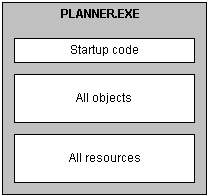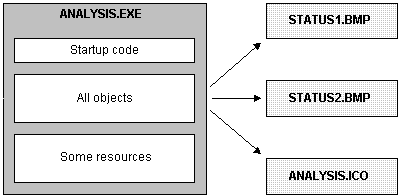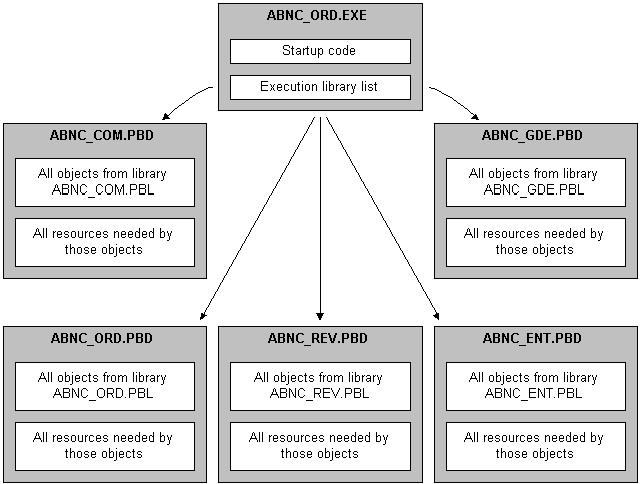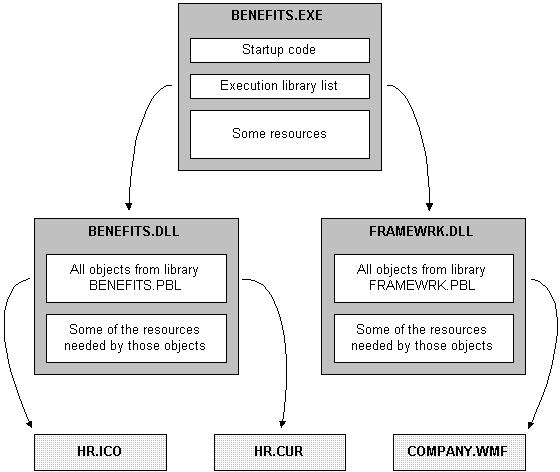As indicated in the previous section, you have many options for packaging an executable version of an application. Here are several of the most common packaging models you might consider.
In this model, you include everything (all objects and resources) in the executable file, so that there is just one file to deliver.
Illustration Figure 40-4 shows a sample of what this model can look like.
Figure 40-4: Standalone executable model

Use This model is good for small, simple applications—especially those that are likely not to need a lot of maintenance. For such projects, this model ensures the best performance and the easiest delivery.
In this model, you include all objects and most resources in the executable file, but you deliver separate files for particular resources.
Illustration Figure 40-5 shows a sample of what this model can look like.
Figure 40-5: Executable with external resources model

Use This model is also for small, simple applications, but it differs from the preceding model in that it facilitates maintenance of resources that are subject to change. In other words, it lets you give users revised copies of specific resources without forcing you to deliver a revised copy of the executable file.
You can also use this model to deal with resources that must be shared by other applications or that are large and infrequently needed.
In this model, you split up your application into an executable file and one or more dynamic library files (DLLs or PBDs). When doing so, you can organize your objects and resources in various ways. Table 40-4 shows some of these techniques.
To organize |
You can |
|---|---|
Objects |
Place them all in dynamic libraries so that there are none in the executable file, which facilitates maintenance, or Place a few of the most frequently accessed ones in the executable file to optimize access to them and place all the rest in dynamic libraries. |
Resources |
Place most or all of them in dynamic libraries along with the objects that use them, which facilitates reuse, or Place most or all of them in the executable file to optimize access to them. |
Illustration Figure 40-6 shows a sample of what this model can look like.
Figure 40-6: Executable with dynamic libraries model

Use This model is good for most substantial projects because it gives you flexibility in organizing and maintaining your applications.
For instance, it enables you to make revisions to a particular part of an application in one dynamic library. However, you must always rebuild the entire application and deliver all the dynamic libraries to customers whenever you make a revision to any library.
This model is just like the preceding one except that you deliver separate files for particular resources (instead of including all of them in your executable file and dynamic libraries).
Illustration Figure 40-7 shows a sample of what this model can look like.
Figure 40-7: Executable with dynamic libraries and external resources model

Use This model is good for substantial applications, particularly those that call for flexibility in handling certain resources. Such flexibility may be needed if a resource:
Might have to be revised
Must be shared by other applications
Is large and infrequently used